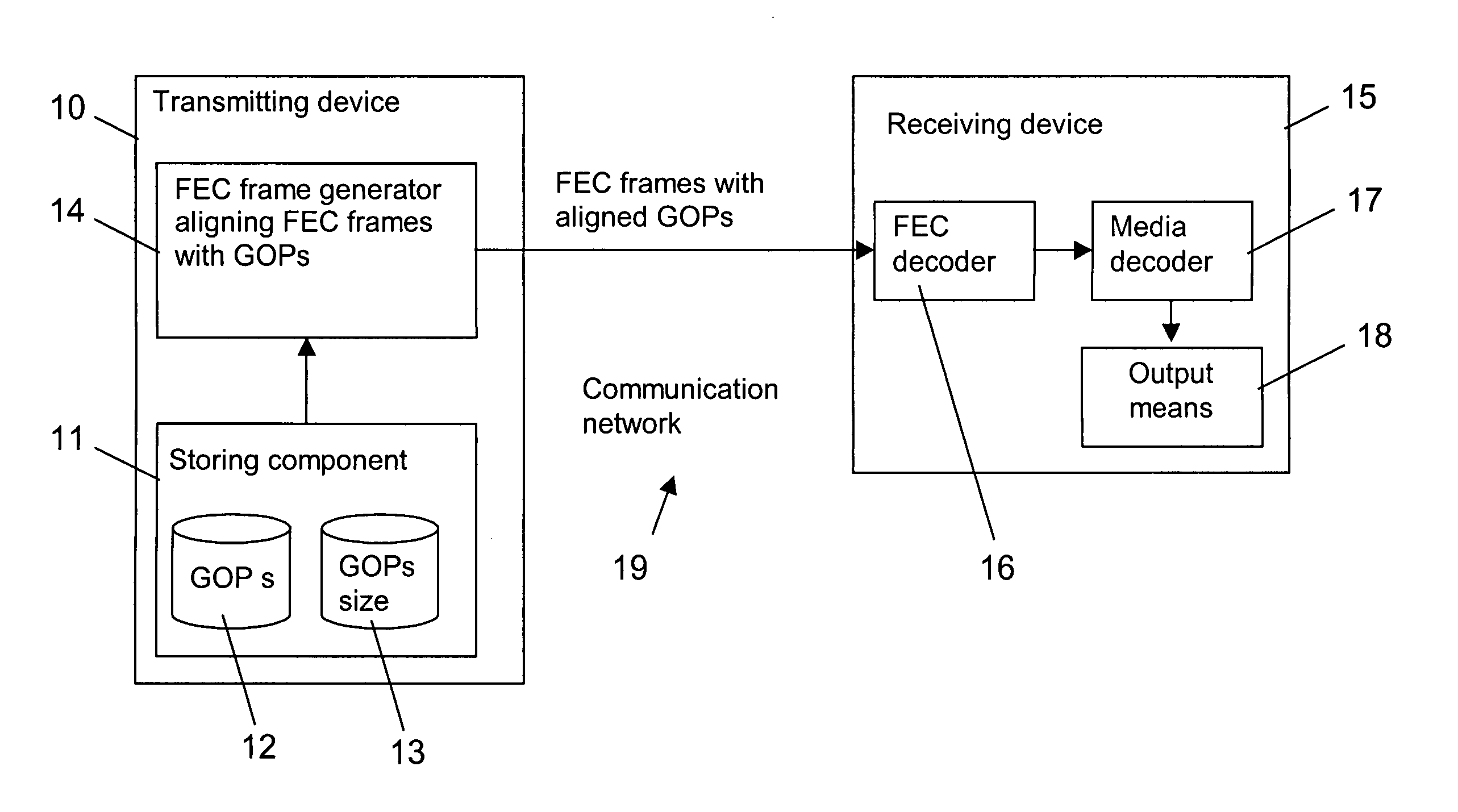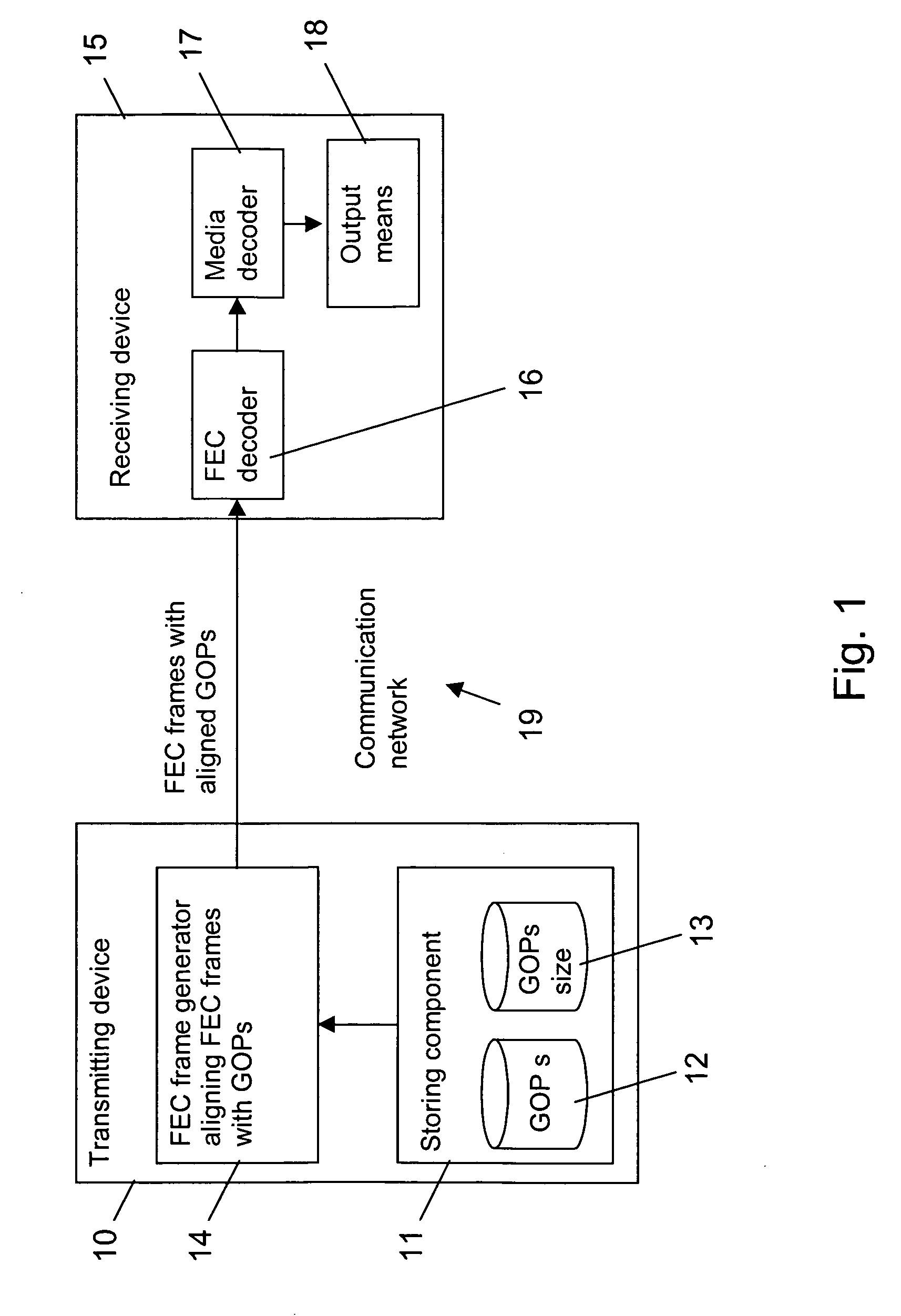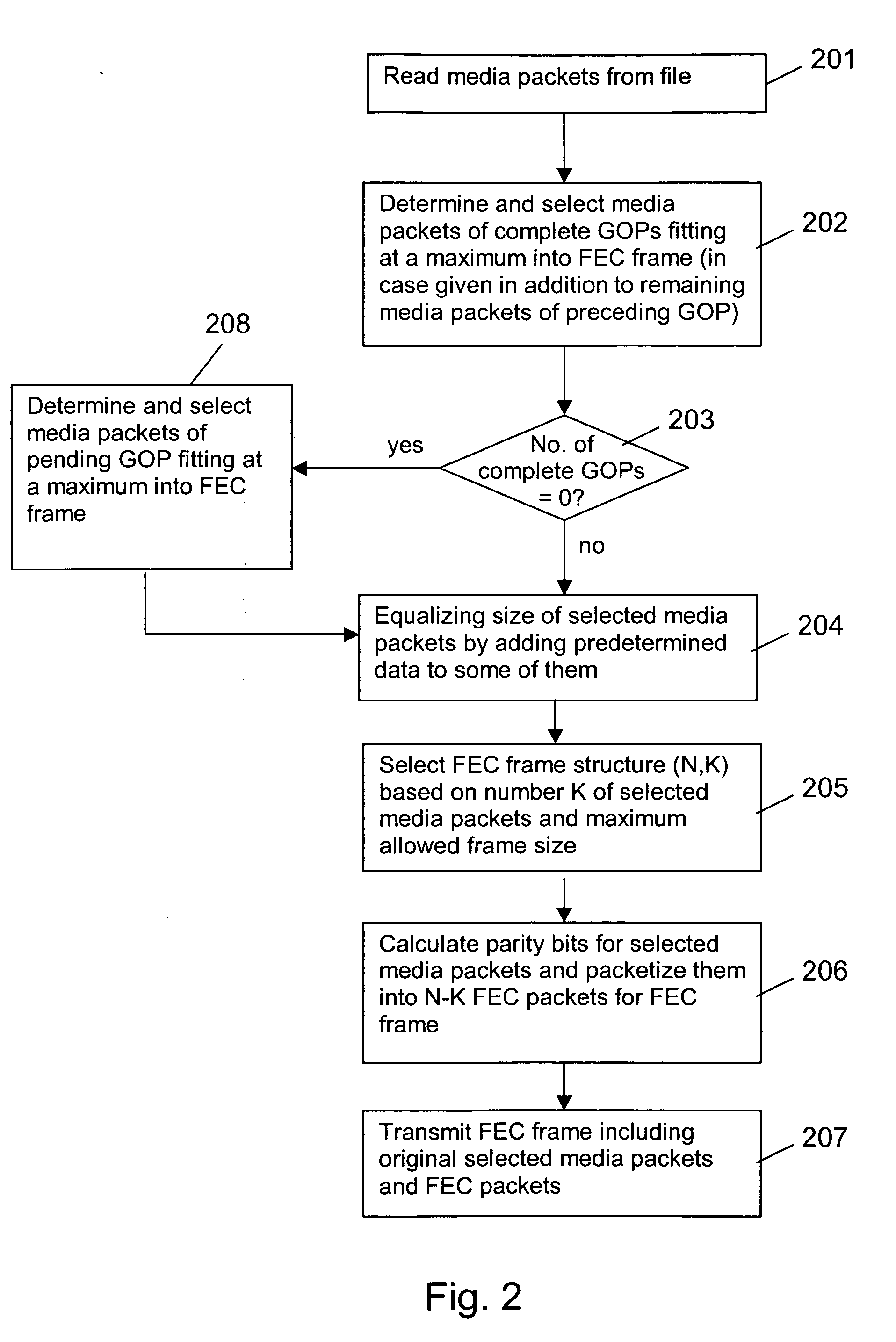Assembling forward error correction frames
- Summary
- Abstract
- Description
- Claims
- Application Information
AI Technical Summary
Benefits of technology
Problems solved by technology
Method used
Image
Examples
Embodiment Construction
[0048]FIG. 1 is a schematic diagram of an exemplary communication system, in which FEC frames are aligned to groups of media packets in accordance with the invention.
[0049] The communication system comprises a transmitting device 10 and a receiving device 15, which are able to communicate with each other via a communication network 19, for example the Internet.
[0050] The transmitting device 10 can be for example a streaming server providing audio and / or video data for transmission via the communication network 19. It comprises a storage component 11 which stores pre-coded media GOPs in a file 12, each GOP comprising a plurality of coded media packets. Each GOP forms thus a group of coded media packets in accordance with the invention. In addition, the storage component 11 stores a file 13 containing information about the size of each stored pre-coded GOP. It is to be understood that this second file does not necessarily have to be in the form of an individual file in a file system...
PUM
 Login to View More
Login to View More Abstract
Description
Claims
Application Information
 Login to View More
Login to View More - R&D
- Intellectual Property
- Life Sciences
- Materials
- Tech Scout
- Unparalleled Data Quality
- Higher Quality Content
- 60% Fewer Hallucinations
Browse by: Latest US Patents, China's latest patents, Technical Efficacy Thesaurus, Application Domain, Technology Topic, Popular Technical Reports.
© 2025 PatSnap. All rights reserved.Legal|Privacy policy|Modern Slavery Act Transparency Statement|Sitemap|About US| Contact US: help@patsnap.com



